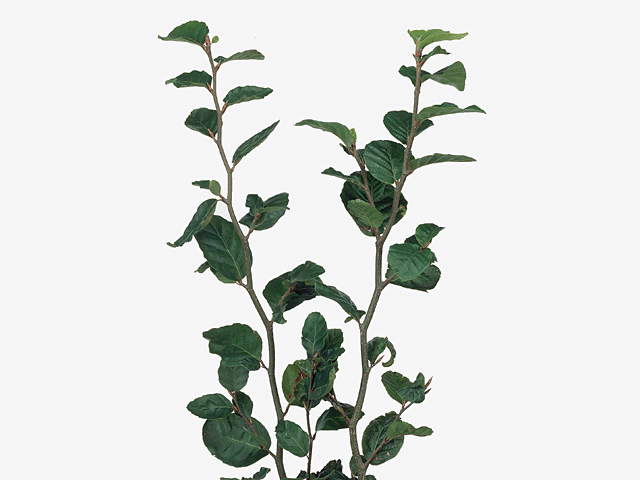Fagus sylvatica

| flowering period | Late spring (May/June) |
| Life span | Long (over 200 years) |
| Leaf tip | Acuminate; Pointed/acute |
| Shape of tree | Elliptic |
| Leaf margin | Entire; Undulate |
| Winter hardness | Good (USDA-zone 5, 6); Reasonable (USDA-zone 7) |
| Soil fertility | No poor soils |
| Leaf, general shape | Oval / elliptic; Ovate (egg-shaped) |
| Leaf size | 4 - 5 cm; 7,5 - 10 cm |
| soil pH requirement | Indifferent |
| Light conditions | Semi-shades; Shady |
| Growth rate | Slowly |
| Leaf, main color | Dark green |
| Sensibilité au sel d'épandage | Sensitive |
| Fruit-bearing period (notable) | Summer (July/August) |
| Autumn color (notable) | Yellow |
| Leaf colour, pattern | Unicolored |
| Toxicity (if consumed) | Not or barely |
| Moisture requirements | Wet; Moist |
The European Common Beech, scientifically known as Fagus sylvatica, is a magnificent tree that is native to much of Europe. It is a deciduous tree that can live for over 200 years, making it a long-lived species. The tree has a distinctive elliptic shape, with pointed and acute leaves that have a slightly wavy margin.
The European Common Beech typically flowers in late spring, specifically in the months of May and June. During this period, the tree showcases beautiful clusters of small flowers. The leaves of the tree are oval or elliptic in shape, with sizes ranging from 4 to 5 cm to 7.5 to 10 cm.
This tree is relatively adaptable to various soil types, as long as they are not poor in nutrients. It thrives best in soils that are moderately fertile. The European Common Beech does not have any specific pH requirements and can grow well in soils with different levels of acidity or alkalinity.
In terms of light conditions, this tree prefers semi-shaded to shady areas. It can tolerate some sunlight, but it generally grows best in areas with reduced light exposure. The growth rate of the European Common Beech is slow, so patience is required when cultivating this species.
The leaves of this majestic tree are predominantly dark green, adding a touch of elegance to any landscape. During the autumn season, the leaves turn a striking yellow, offering a breathtaking display of vibrant colors. The tree's overall leaf color and pattern remain unicolored, providing a consistent and pleasing appearance throughout the year.
It is worth noting that the European Common Beech is sensitive to road salt, so it is advisable to avoid planting it near roads or areas where salt spread is common. However, it does possess good winter hardiness and can withstand cold temperatures, with the ability to thrive in USDA zones 5 to 7.
During the summer months of July and August, this tree bears fruits that are noteworthy. The fruits, known as beech nuts, are small triangular nuts enclosed in prickly husks. They are a valuable food source for wildlife, including birds and small mammals.
As for its toxicity, the European Common Beech is not considered toxic if consumed in small quantities. However, it is important to note that the nuts contain tannins and should not be consumed in large amounts.
The moisture requirements of this tree are moderate, as it can tolerate both wet and moist conditions. Adequate water supply is essential for the European Common Beech to thrive and maintain its overall health.
In conclusion, the European Common Beech is a magnificent tree species with many appealing characteristics. Its long lifespan, striking foliage, and adaptability to various soil and light conditions make it an excellent choice for landscaping projects. Despite its slow growth rate, the beauty and resilience of this tree make it well worth the wait.
Market availability index by month:
| Jan. | Feb. | Mar. | Apr. | May | Jun. | Jul. | Aug. | Sep. | Oct. | Nov. | Dec. |
|---|---|---|---|---|---|---|---|---|---|---|---|
| 3 | 3 | 3 | 3 | 4 | 3 | 3 | 3 | 3 | 4 | 4 | 4 |